Europe and Japan complete JT-60SA, the most powerful tokamak in the world!
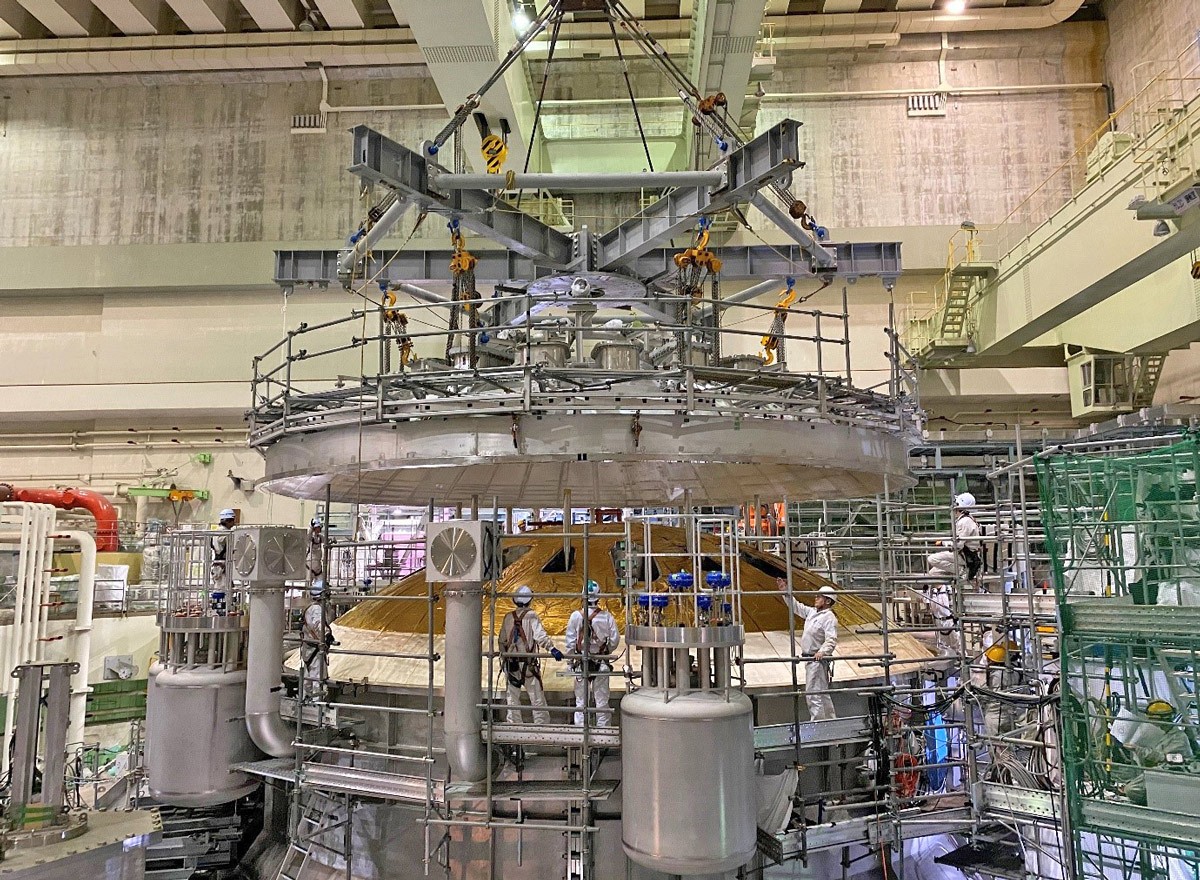
The Cryostat Top Lid is lowered in position marking the end of main assembly operations
Almost twelve years after they started their collaboration under the auspices of the Broader Approach Agreement, Europe and Japan have taken an important step in the development of fusion energy by completing JT-60SA, the most powerful tokamak in the world before ITER enters the picture.
With a diameter of 12 m, the dimensions of JT-60SA are about half the size of ITER. In the future, its powerful heating systems will be able to bring the hydrogen plasma to temperatures over 200 million °C, comparable to those foreseen in ITER. It also has a similar system of superconducting magnets, which will confine and control the plasma, and a liquid helium cooling system that will cool them to -269 °C. In terms of plasma volume, JT-60SA is almost five times smaller than ITER and it will operate with a mix of hydrogen and deuterium gas.
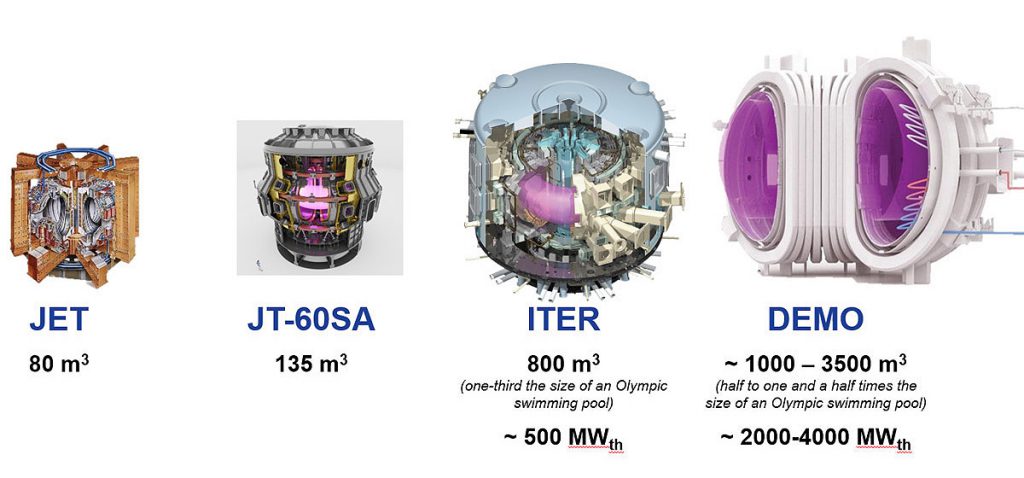
A comparison of the plasma volumes in JET (currently the biggest tokamak in the world), JT-60SA, ITER and DEMO (the industrial demonstration reactor to follow ITER). For ITER and DEMO, the thermal power released is also indicated.
.
Japanese and European engineers were able to use much of the existing site infrastructure inherited from the previous JT-60U device, allowing them to reduce time and costs. However, most of the main components have been completely re-designed and manufactured anew by the two partners. Europe has contributed the toroidal field coils, high temperature superconductor current leads, the cryostat, the cryoplant, and part of the power supplies, while Japan provided the poloidal field coils, the vacuum vessel and in-vessel components, basic power supplies, thermal shields, cryostat port extensions, assembly, disassembly and basic remote handling tools.
The first component installed, back in January 2013, was the cryostat base of 13 m diameter and weighing 250 tons. It was designed by CIEMAT, fabricated in Spain and transported by F4E to Japan. In 2015, the first set of EU Power Supplies was delivered and installed, followed by the Superconducting Magnet power supplies and the Switching network Units. The installation of the cryoplant took a bit over than a year and was completed in December 2016. The most complex of the EU contributions, the eighteen Toroidal Field Magnets, were fully tested at nominal temperature and current in the Saclay Test Facility (CEA) and delivered to Naka over a couple of years, with the last two ones arriving in March 2018. The assembly of the TF coil magnets was completed in May 2018. PF coils were installed in final position, the complex system of thermal shield erected, the central solenoid inserted, the cryostat erected and sealed around the machine. Finally, the so-called “top lid” was lowered to close the cryostat structure. It was on 30 March 2020 that the JT-60SA assembly was completed, after seven years of intense work. The machine is currently undergoing some functional tests, known as integrated commissioning. Significant effort Is being made towards an early realization of the first operation, the so-called First Plasma , minimizing the effects of COVID-19.
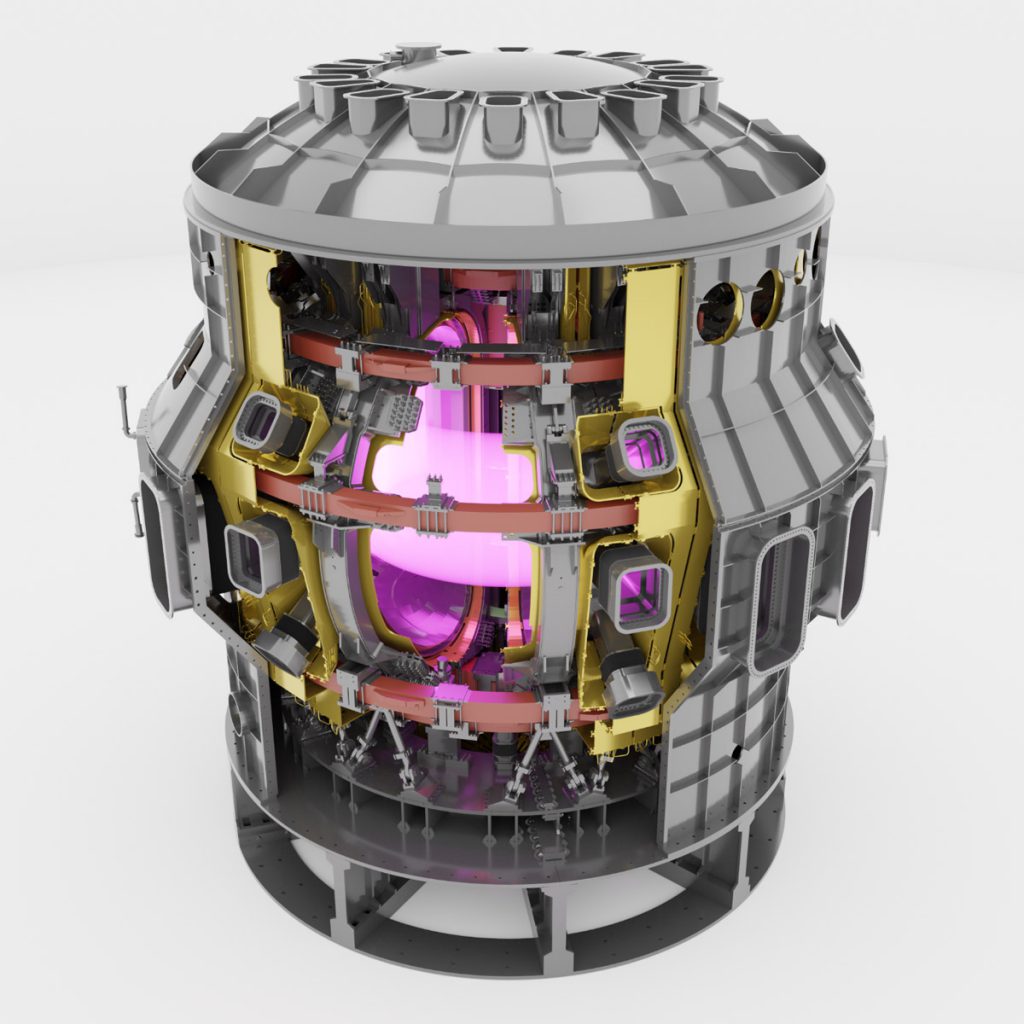
The switching on of JT-60SA is an exciting milestone and it will mark the birth of a new leader in the field of fusion devices.
“The main engineering feature of JT-60SA, is the development of a superconductive tokamak which, while designed for very ambitious plasma parameters, is remarkably cost effective, from the fabrication, assembly, integration and operation standpoint, and it has been built within cost, and normalised cost-units, which are very low compared with other tokamaks.”
Enrico Di Pietro, F4E’s Programme Manager for JT-60SA
According to Enrico, the key to this has been “the novel design solutions in many areas, such as the optimisation of the magnets design, cryogenic cooling concept of the magnet, design solutions for the mechanical support system for the machine as a whole and the magnet in particular, lightweight simple design solutions for the cryostat, effective design of power supply systems, following an holistic approach to the system design, based on appropriate know-how and tools for system level optimisation.”

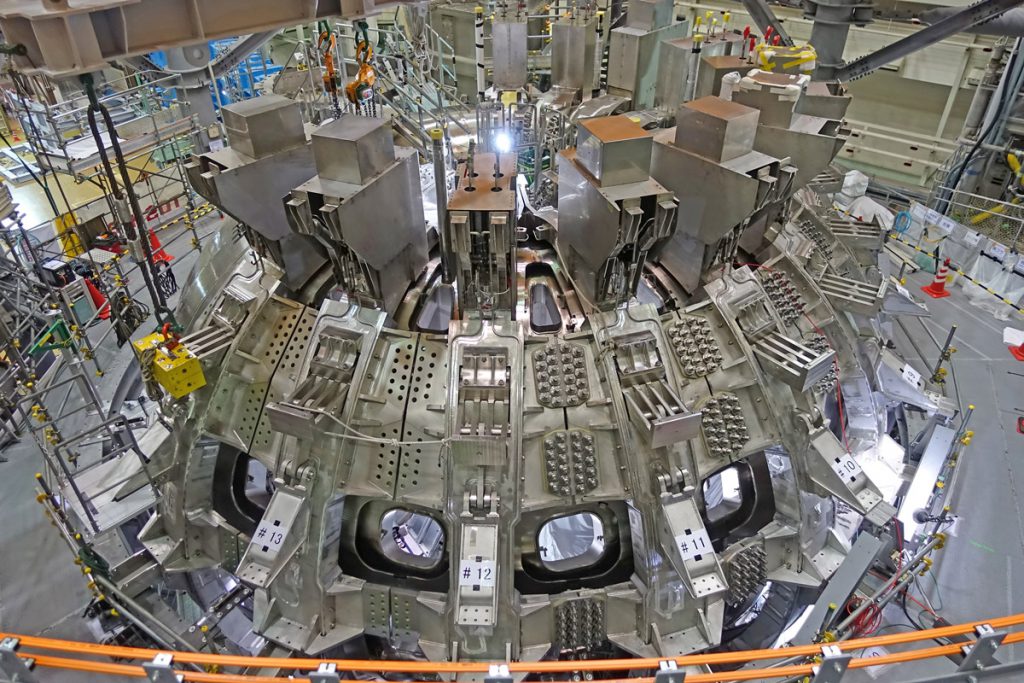
In operation, JT-60SA will sustain plasmas of up to 200 million °C for up to 100 seconds, offering insight as to how to keep the plasma hot and stable as well as how to handle the power exhaust. It will initially be used as a proving ground for ITER, as the two devices are highly complementary in many areas, including plasma parameters; superconducting magnet and cryoplant design, heating and current drive systems. In the words of Enrico Dipietro, “the JT-60SA programme includes a number of specific areas designed to provide important contributions to the optimisation of ITER operation and the design of DEMO”.
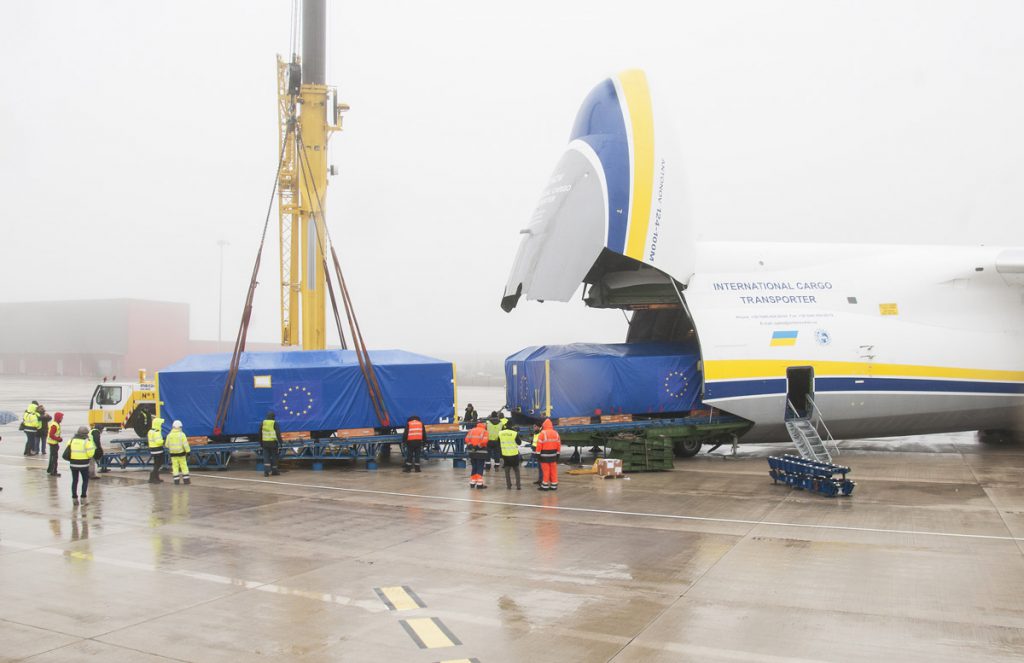

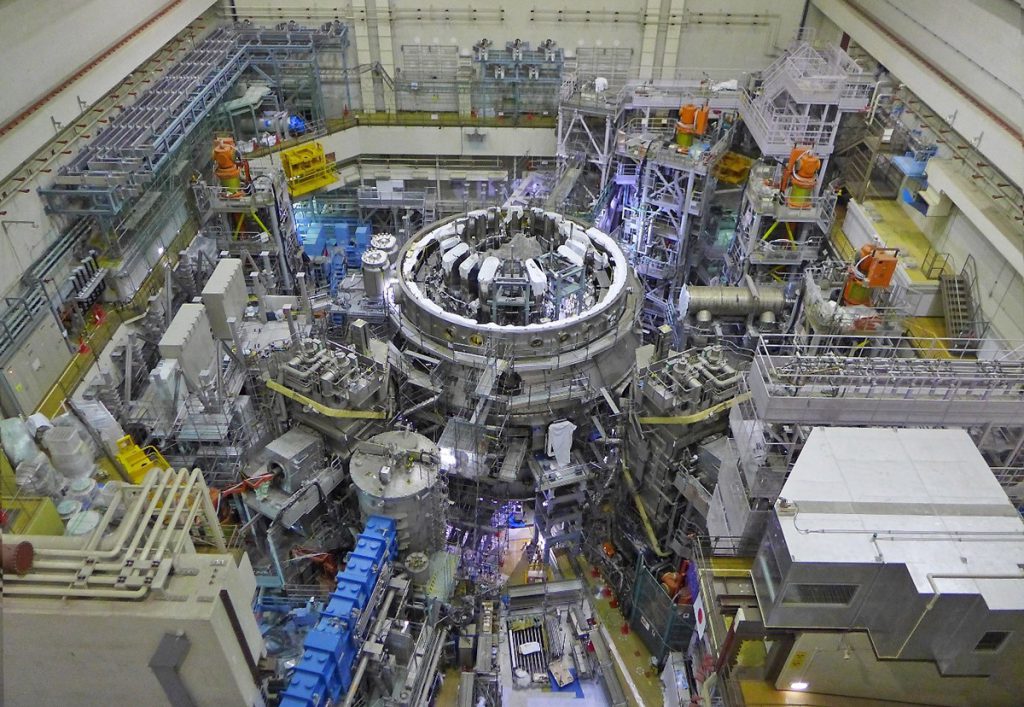

After proving that JT-60SA’s core systems can work as intended, further enhancements will take place in 2021-2023, inserting additional plasma heating and fuelling systems and instruments to measure plasma conditions and regulate cooling.
JT-60SA’s operations will evolve over its lifespan according to the needs of the fusion community. In its first years, its primary function will be to prepare and support the assembly, commissioning and preliminary operation of ITER. Engineers and scientists from ITER are going to work together with the JT-60SA Project Team to gain valuable knowledge in relation to its assembly and commissioning, and first plasma operation, helping them to mitigate risks for ITER.
As the tokamak closest in design to ITER, JT-60SA will perform experiments to help scientists prepare as much as possible for the beginning of its operation. Once ITER is running, however, the focus of JT-60SA’s research is likely to shift towards preparation for the following generation of fusion reactors focusing on the demonstration and optimisation of steady-state operation of advanced plasma configurations. JT-60SA has been designed to cover plasma research not covered by any other existing machine and for some aspects (related to operation scenarios more relevant to DEMO) not even by ITER.
“JT-60SA has been and will be a unique opportunity to raise the ‘ITER generation’ of engineers and scientists, a function not to be understated in research programmes like fusion, in which, maintaining the knowledge and expertise has to be guaranteed over rather long time horizons.”
Enrico Di Pietro, F4E’s Programme Manager for JT-60SA
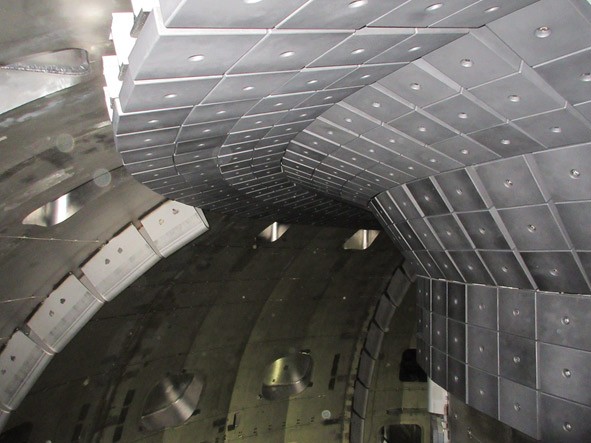

The National Institute for Quantum and Radiological Science and Technology (QST, Japan) and Fusion for Energy (F4E, Barcelona) are the implementing agencies for JT-60SA with the responsibility for the manufacturing of components, the assembly and commissioning of the device.
The EU contribution to JT-60SA has been possible thanks also to the great voluntary contribution of a number of EU Laboratories: CEA (France), ENEA (Italy), CNR-RFX (Italy),KIT (Germany), SCK-CEN (Belgium), and CIEMAT (Spain) which participated to the design and contracted the manufacturing of most of the EU Contribution. These contributions have also supported the growth of a young generation of researchers, who have proven their managerial and engineering skills in their respective institutions.
For its part, QST was able to work with a number of Japanese companies, including some manufacturing giants such as Mitsubishi Electric Co. and Toshiba.
The excellent collaboration between the EU and Japan has increased significantly their mutual trust paving the way for future achievements. The extension of the BA Agreement (including JT-60SA), signed in Brussels on 2 March 2020, has confirmed their intention to keep working together. The successful completion of JT-60SA highlights the increasing capacity of the fusion community in Europe and Japan – but also across the world – to work well together and deliver on important milestones and moving a step closer to bringing the power of the Sun to Earth.